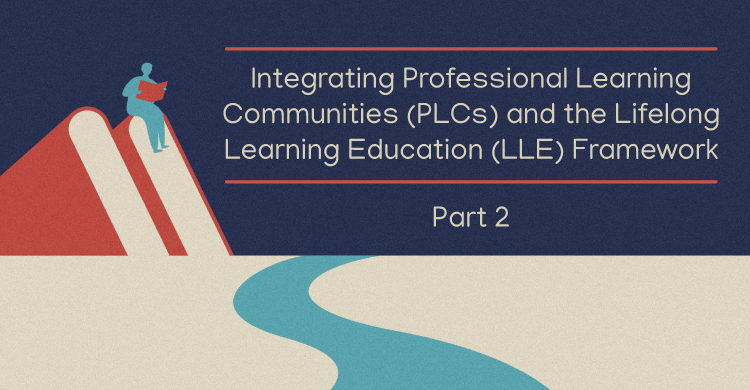I recently ran across a blog titled “Is Common Core the Enemy of Autonomy?” by Justin Minkel (you can go to the link later, but I will tell you the ending up front; the answer is NO). What the Common Core does give us is the very very rich opportunity for Defined Autonomy.
Robert Marzano and Timothy Waters, in District Leadership That Works, reveal this loose-tight teacher and teacher leadership idea:
How can we find school autonomy positively correlated with student achievement and site-based management exhibiting a negligible or negative correlation with achievement? The question might be answered in light of our other findings . . . Defined autonomy means that the superintendent expects building principals and all other administrators in the district to lead within the boundaries defined by the district goals. (Marzano & Waters, 2009, p. 8, emphasis in the original)
As a PLC leader, you become a boundary defender. The boundaries defined by the district vision and values establish the most critical and coherent work of each school site in the district. Similarly, the boundaries defined by the school vision and goals should be in direct alignment with the district goals and define the most critical and common work of each grade level, department, or teacher team. These boundaries are tight, they are defined, they are non-negotiable, and yes, they are required.
Further, Marzano and Waters (2009) show that the defined autonomy boundaries lower variance and increase the reliability of adult actions that improve student achievement. That is exactly the goal of becoming a professional learning community: high reliability, high coherence and low variance in the quality of the teaching, learning, and assessing of every student. This goal is achieved because “effective leadership at the district and school levels changes what occurs in classrooms, and what happens in classrooms has a direct effect on student achievement”.
The boundaries thus become an inequity eraser from school to school, grade level to grade level, course to course and teacher to teacher.
Consider the vision and value of student-engaged learning. Do faculty members or administrators have the right to fly outside the student-engaged learning vision and values boundary and not actively engage students? Absolutely not.
In fact, you and those you lead have an ethical, professional, and moral obligation to ensure the shared vision of student engaged learning is implemented by all (no inequities allowed). Those you lead cannot fly outside of the box of the expected shared vision behaviors.
However, those individuals could use many different structures or methods to implement actions that serve the vision. How to implement the vision can and should be loose. As the leader you give the faculty and staff autonomy, within defined and well-articulated boundaries.
Paul Sullivan, in his 2010 book Clutch, indicates that one way to eliminate the stress in making clutch decisions is to provide parameters that focus the decision-making process. Essentially, the parameters (or boundaries) provide the focus needed to meet the targets for student achievement in a PLC. This is the wonderful paradox of the loose-tight or “defined autonomy” leadership culture. It is another of those leadership practices where the “tyranny of OR” cannot rule.
Adults can work within a defined set of behaviors and have an opportunity for freedom and choice.
Autonomy is different from independence by the way. Autonomy in the loose-tight PLC world does not mean the individualism of going it alone, relying on nobody. Yet as Daniel Pink (Drive, 2009) points out, autonomy “means acting with choice—which means we can be both autonomous and happily interdependent with others.
Interestingly, according to Pink, the autonomy workers seek is not necessarily over aspects of the vision—the stuff you must be tight about—but over four specific aspects of their work: “What they do, when they do it, how they do it, and whom they do it with”.
These are areas in which a PLC leader can be a bit loose.
What does this mean for you as a PLC leader? How can you be tight about vision implementation and give those you lead—those in your sphere of influence—a sense of well-defined autonomy and control.
What you do. What you are to do in a PLC is defined by both the vision of curriculum, instruction, and assessment that has been developed by the district, school, or team, and the PLC expectations for team participation and team-based plans that turn the vision into action. “What you do” is developed and created during the action plan process that designs the work of the faculty and administration at the start of any school year.
Autonomy is built in when you have established an ongoing yearlong process that allows all faculty and staff a voice in those required adult actions for the school year.
That voice, however, is not a we get to do whatever we want voice. It is a voice defined within the parameters of the vision. As the leader, you must monitor that voice and ensure those parameters are being honored.
When you do it. Education by its very nature is built around firm time schedules. Most school leaders enjoy the freedom to vary their schedule every day—within the constraints of being in an office or on a campus. The question for you to ask is: are there ways (within reason) to provide some faculty control over when they do certain aspects of their job—especially the opportunity and time to engage with their professional learning community teams?
How you do it. I have long been a champion of allowing faculty and staff teams to have a lot of freedom and choice over how to proceed as long as it met the expectations of the district or school vision. This freedom is part of professional risk taking—inquiry-based efforts intended to figure out what works and doesn’t work. Teams of adults cannot be afraid or worried about what will happen if a new idea they decide to try is not working.
One way to feel more comfortable with autonomy over how to get things done is to make sure that every risk-taking action is tied back to some aspect of student growth and learning achievement target, and then evaluating that action based on actual results and improvement throughout the school year.
Whom you do it with. This is one of the most under applied aspects of PLC leadership. Well-intentioned PLC leaders understand the necessity for teaching assignments that take into account teacher pedagogical knowledge and teacher relational competency.
Possible assignments at the school or team level are made based on the leader’s understanding and expectations for how well a specific set of adults assembled will actually work and engage together in their PLC teams. In establishing team assignments (whether by grade level or course), the PLC leader attempts to create the best assignments based on pedagogical and content knowledge, as well as teacher relational competency—knowledge and strength in working with others.
Over the years, I learned to place faculty members on various teams based on relational character first, pedagogical competence second, and commitment to the cause third. Character, competence, commitment—in that order.
Every time I placed someone on the team primarily because of competence, it caused a problem for that team if that person was not relationally a good match. More often than not, with the right match of relational skills, the team will help the competencies of the faculty or staff member to grow and be sustained over time. Think about how this issue should impact teacher and teacher team assignment decisions you make for the 2014-2015 school year.
Re-posted, with permission, from Tim Kanold’s blog.
[author_bio id=”390″]






